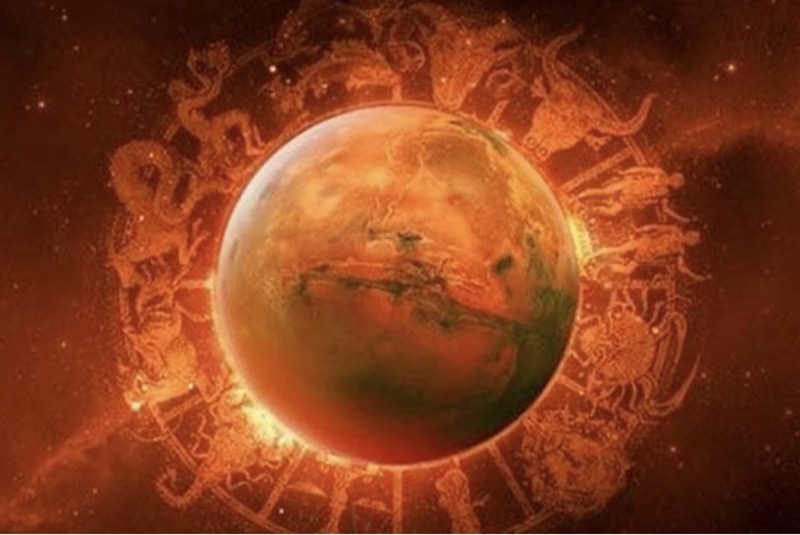The ‘world’s most beautiful woman’ married a peepul tree. Unlike other women, she didn’t have to marry a dog. If reports published by credible newspapers are to be believed, she tied the knot at a Hindu temple in Varanasi, a town on the banks of the river Ganges. A few days later, she married a banana tree in Bangalore, a city known as the ‘Silicon Valley of India.’ Then, she married an idol of the Hindu deity, Vishnu, in Ayodhya. After that, she finally married a human being—her fourth husband—a Bollywood star, who is the son of a Bollywood ‘Superstar.’
She isn’t the only person to have ‘married’ across species. A professor of ethnic American and postcolonial literature at Harvard, Yale, and Johns Hopkins University—who says it is her ‘life’s goal to educate young minds about how the developing world was not the archaic space often portrayed by the media’—also ‘married a plant’ in her mother’s living room in Los Angeles. Similarly, a New York Times journalist married a ‘curvaceous clay pot,’ (she calls it Mr Pot) ‘before marrying the love of her life,’ at a Hindu temple in Hong Kong.
Why would the ‘world’s most beautiful woman’ marry a tree? After all, she’s a celebrated actress, crowned ‘Miss World,’ honoured with Ordre des Arts et des Lettres by the Government of France, awarded the Padma Shri by the Government of India and listed by TIME as one of the ‘most influential women’ in the world.
Why would a Harvard academic, whose goal is to ‘redefine terms like primitive, provincial and backward,’ take a basil plant as her ‘first husband’? Why would a New York Times journalist, acutely aware of gender inequities, ‘marry’ a pot? Why would globe-trotting, educated, professionally and financially secure individuals ‘marry’ plants, pots, idols or dogs before marrying human beings?
There’s a one-word answer: astrology.
For centuries, ‘Vedic astrologers’ have successfully propagated the myth that an imaginary alignment of stars determines every aspect of life. That myth is still alive today. Astrology, or ‘jyotishya,’ as it is called in Hindi, envelopes almost all aspects of life in India.
India’s investors, for instance, look at ‘astrological analysis’—planetary positions of the Sun, Moon, Mars and Saturn of specific stocks—before looking at technical and fundamental analysis. So great was the impact of ‘astrological predictions’ in moving the Indian stock market that the Securities and Exchange Board of India issued a directive urging investors not to make investments based on astrology.
Astrology afflicts politics and public policy, too. India’s politicians seek comfort from political paranoia by patronising astrologers. India’s former Prime Minister, Indira Gandhi, took critical political decisions after consulting astrologers. Prime Minister Narendra Modi and Chief Minsters of various states seek astrological advice on a wide range of matters—from parliamentary proceedings and cabinet portfolios to timings for events and decor for office rooms.
Wily politicians use astrology to advance their political agenda; self-styled Hindu supremacists, under the guise of ‘protecting’ and ‘reviving’ ancient traditions, claimed astrology to be a ‘science’ and established ‘departments of astrology’ in Indian universities.
The majority of India’s middle classes—far removed from the corridors of power and divested from market manoeuvres—seek reassurance from the vagaries of life by ‘consulting’ astrologers on most matters—from marriage, money and jobs to choice of clothes.
Such is their belief in Vedic astrology that even unborn babies are subject to the astrologer’s whims; the imaginary influence of stars determines even the time and method of childbirth. For instance, in India’s hospitals, cesareans are done not only for medical reasons but also astrological reasons–they are called ‘Muhurat c-sections’; at least one in five elective cesareans are done at a time chosen by the astrologer. Furthermore, as soon as a baby is born, parents and grandparents rush to astrologers to get their horoscopes done.
For decades, astrology was a micro/small-scale industry, a family enterprise, passed down from generation to generation. One could find an astrologer on every street corner in India; while most languished in corner shops as fortune tellers, astrologers who managed to bag top politicians and businessmen as clients turned into power brokers and minted a fortune.
Some astrologers who had the resources to market themselves charted their own destiny; by getting their ‘astrological forecasts’ published in established media networks through ‘brand partnerships’ and ‘Value Ad Initiatives, they transformed themselves into ‘celebrated astrologers.’
Now, in the hyper-globalised world, one finds astrologers in every corner of the world. Shop fronts in London’s Wembley/Southall and New York’s Little India are plastered with posters and pamphlets that promise ‘Vedic astrological cures for all ills’—with a ‘100 per cent guarantee.’
Earlier, before the advent of digital payment systems, astrologers took payments for their services either in cash, gold, or both. Much of it went unreported and was excluded from the tax net. Today, astrology is big business. Accelerated by technology and propelled by the paranoia of a volatile world, the ‘digital Vedic astrology industry,’ estimated to be $40 billion by the Trade and Business Council of India, is witnessing dramatic growth. In the last decade, astrology-based startups have grown by 30 per cent. Astrology websites, apps and cloud calling platforms that offer online consultations are in great demand; some apps have over twenty million customers worldwide and millions of downloads on Google Play Store.
In India’s complicated, convoluted ‘marriage market,’ these astrology apps—with astrological forecasts sans scientific rationale or evidence—play havoc in the lives of unmarried people. Potential grooms and brides, who navigate the complexities of caste, colour, race, class, language, region and religion, are now forced to fight an uphill battle against the assault of astrology.
How so?
Women and men whose astrological stars are not aligned—ostensibly because of the ‘planetary position of Mars (called Mangal)’—are considered to be ‘cursed.’ The curse is called ‘Mangal Dosha,’ which loosely translates to ‘Martian Curse.’ Those afflicted by the curse are called ‘Mangliks,’ who, it is believed, bring bad luck—death, discord and destruction. So, for no fault of their own, just for being born at a particular time, they are rejected and relegated to the dustbin of India’s ‘marriage market.’
In the early decades of the twentieth century, India’s newspapers carried matrimonial advertisements with a terse statement: ‘Mangliks need not apply.’ Now, matrimonial websites and apps, which provide a service to match horoscopes, have ‘features’ that allow users to ‘unselect’ those considered to be ‘Mangliks’ with the click of a button.
Put simply, by declaring a person to be a ‘Manglik,’ astrological websites and apps discriminate people based on the time of birth. By providing features that ‘unselect’ a person for being a ‘Manglik,’ matrimonial websites deny a person the right to marriage, a fundamental right enshrined in the Universal Declaration of Human Rights. Rituals that force people to marry plants, pots, idols and dogs strip people the basic dignity of marrying as ordinary human beings in society.
Indians have managed to send a mission to Mars on the cheap. However, they have not been able to curb unfounded beliefs like the ‘Mangal Dosha.’ On the contrary, such superstitions are spreading like a virus. Today, powered by digital technology, the Manglik myth is a global phenomenon. A Google search of the word ‘Manglik’ throws up 4,580,000 (4.58 million) results. Similarly, platforms like YouTube, Twitter (X), Instagram, Quora, Facebook and even LinkedIn, are populated with content that propagates the myth that ‘Mangliks’ cause death and destruction.
Though it’s believed that the ‘Mangal Dosha’ or ‘Martian Curse’ affects both women and men, it is mainly women who bear the brunt of this superstition. Many women, who are branded as ‘cursed for life,’ remain unmarried. Parents keen to marry their daughters force them into marriage, sometimes with older men with physical or mental disabilities. Those who hope to cancel the curse reach out to Vedic astrologers.
Adept at exploiting emotional insecurities, opportunistic astrologers make unmarried young women and men marry plants, pots, idols and dogs in a ritual called ‘Kumbh Vivah,’ which, ostensibly, ‘cleanses’ them astrologically and makes them ‘eligible’ for marriage. The idea is that once they ritually ‘marry’ a tree, pot, idol or dog, the Martian curse is passed on to them. The ‘most beautiful woman in the world,’ the Harvard academic and the New York Times journalist were subjects of this ritualistic scam.
Slapped with a lawsuit for entering into ‘false marriages,’ the husband and father-in-law of the ‘worlds most beautiful woman’ denied that she had married a tree. But the Harvard academic and the New York Times journalist owned up to marrying plants and pots; justifying their actions, they wrote about their experiences.
Their accounts present this morally reprehensible, legally objectionable superstition through nostalgic notions of ‘respect’ for myth, belief, tradition and culture. Far from critically examining the discriminatory impact of such practices, they blame ‘Westernised education’ and notions of ‘modernity’ for being ‘close-minded.’
There is no reliable data on how many people astrologers categorise as ‘Manglik,’ or how the ‘Martian Curse’ impacts unmarried people. Astro apps and websites do not share data on how many people are unselected, blocked or rejected for being astrologically ineligible. There are no artificial intelligence tools that assess how many women remain unmarried or were forced into marriage because of this superstition.
However, this multi-generational scam impacts people in extraordinary ways. For instance, recently, a man accused of raping a woman in India used the ‘Mangal Dosha’ as an excuse to justify his actions. Regrettably, the High Court of Allahabad accepted his plea and sought to verify if the girl was indeed a ‘Manglik.’
The myth of ‘Mangal Dosha’ is a testimony to how the economics of superstition perpetuates through generations. It also shows how traditions that exploit insecurities and emotional vulnerabilities pressurise human beings into following dehumanising practices.
Left unchecked, this $40 billion digital Vedic astrology racket will continue to discriminate and dehumanise unmarried people in the years to come. Ergo, ‘Astro’ websites, apps, and cloud calling platforms must come under the regulator’s scanner. Tech giants must ensure that their search engines and algorithms do not propagate such myths; if anything, they must their cleanse their search engines of this virus of a myth.
But in an age where heads of state, politicians, law makers and business leaders are guided by faith, will decisions be based on rationality? Even astrologers won’t be able to answer that.
-30-
Copyright©Madras Courier, All Rights Reserved. You may share using our article tools. Please don't cut articles from madrascourier.com and redistribute by email, post to the web, mobile phone or social media.Please send in your feed back and comments to [email protected]











